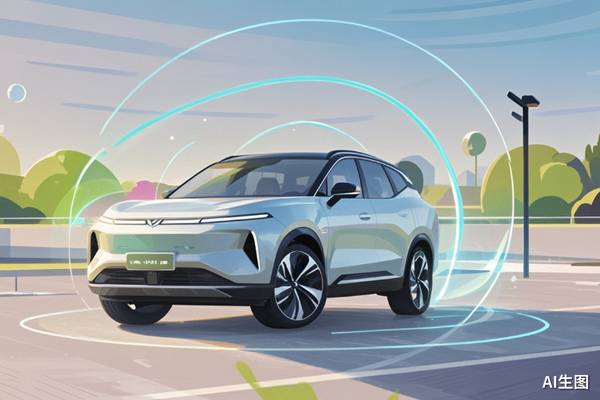Since July, six new car models have been intensively launched, sparking high – level attention and intense discussions among consumers. The Li Auto i8 and the LeDao L90 have reached a climax, and the Tesla Model Y L has made a big splash with a set of “combination punches”.
During the “Golden September and Silver October” period, more car manufacturers have joined the battle. The proportion of new car series with six – seat models has reached nearly 20%, which forms a sharp contrast with the current on – sale ratio of nearly 8%. It can be seen that under the continuous involution in the industry, all car manufacturers don’t want to miss this rare “blue ocean” opportunity and are quickly deploying to seize the market opportunity.
How the tables have turned! Has the once – useless six – seat car now become a popular choice?
There is no such thing as a permanent backseat. In this rapidly changing era, anything is possible. With the steady implementation of the universal two – child policy, the consumer demand for 6/7 – seat SUVs/MPVs has directly increased. However, as the scenarios of multi – person car use become more frequent and the “4 + 2” weekend outings have gradually become the norm, people have new expectations for space and comfort.
According to the big data of Autohome, in the past three years, the number of times users have paid attention to and discussed six – seat cars has been increasing rapidly year by year. In 2025, it exceeded that of seven – seat cars for the first time. More than 90% of the prospective buyers considering purchasing six – seat models are married couples with children in large families.
According to the research data of Autohome, new – energy prospective buyers have a more obvious preference for six – seat models. 21% of the prospective buyers have a clear car – buying goal and say they will only consider purchasing six – seat models, which is much higher than the 10% of traditional – energy prospective buyers. Of course, this is directly related to the richer product offerings and relatively stronger product competitiveness of new – energy six – seat models.
Why do users firmly choose six – seat models? The most important reason is the independent seats and higher comfort, accounting for 61.8%. Followed closely is that it is more suitable for travel, accounting for 28.2%. In addition, users who love six – seat models have a prominent feature: more than 90% of them prefer SUVs.
Prospective buyers with clear goals will have a firmer consumption intention. But if car manufacturers still offer the same old products to consumers, the six – seat cars will still be “useless”. Therefore, for the niche market to become popular, user demand is just the starting point. To make it thrive, “high – quality” products are also needed.
First of all, there are more products to choose from. In 2019, new six – seat car models emerged in large numbers. A total of 202 models were launched throughout the year, with a year – on – year increase of 339%. After a slight decline in 2020, the growth trend became stable. Although the new – energy six – seat car market has advanced at a relatively slow pace, it has been making steady progress. By 2025, the proportion of newly launched cars has reached 79%, making it the main force in the niche market.
In the new models, the proportion of SUVs is increasing. In 2016, MPVs dominated the market, and the proportion of new six – seat SUV models was only 20%. By 2025, the proportion of new SUV models has soared to 88%, becoming the absolute main force, which perfectly matches the consumption preferences of users.
Facing the new market opportunity, new – energy vehicles have responded quickly. By 2025, 79% of new six – seat cars are from the new – energy sector, far higher than the 35% of seven – seat cars. Currently, seven – seat new cars are still mainly fuel – powered vehicles. With the ever – rising oil prices, new – energy vehicles have effectively made up for the shortcoming of high usage costs of “large cars”, allowing users to make decisions more quickly without worries.
Although new – energy vehicles are “cheap” to use, the once – sky – high prices have deterred many users. Now this problem has been solved. In 2019, 50% of the newly launched cars were priced above 500,000 yuan, and the distribution in each price segment was very uneven.
By 2025, the price distribution of new cars has become more reasonable. The main price range has dropped to 200,000 – 400,000 yuan. Among them, cars priced at 200,000 – 300,000 yuan account for 25%, and those at 300,000 – 400,000 yuan account for 27%, with a total of more than 50%. The economy segment below 200,000 yuan has not only achieved a breakthrough from zero but also reached a relatively high proportion of 25%.
Now, six – seat cars with more product options and lower prices can be on users’ shortlists. However, to conclude a deal, there is still an important issue to be solved – space. After all, just being able to fit people in is the minimum requirement, and being comfortable is the real necessity.
In the past, the third – row seats of most six – seat cars were usually only for emergency use. Due to factors such as limited space and low seat comfort, it was difficult for people to sit there for a long time. If children sat there, although the space was acceptable, the safety factor was low, so it has always been criticized. Now, the size of six – seat cars has increased significantly. Compared with 2019, the wheelbase of new – energy six – seat cars in 2025 has increased by 8.8% year – on – year, and that of traditional – energy cars has increased by 12.5% year – on – year. The maximum car length is nearly 6 meters.
Although the larger – sized six – seat cars in the new era have significantly solved the problem of useless space, new problems have emerged. The larger body has directly increased the driving difficulty. A car length of 5 meters is considered the dividing line of driving difficulty. When the length exceeds 5 meters, the driving and parking difficulty will increase significantly, and it will be very difficult when it exceeds 5.5 meters. However, thanks to the development of technology, these problems are being solved.
People’s preference for new – energy six – seat cars is not only due to cost – of – use considerations but also because of the attraction of emerging technologies. A larger car doesn’t mean it’s harder to drive.
According to the data from Autohome’s car model library, by 2025, the standard – equipment rate of parking assistance for new – energy six – seat cars has soared to 89.1%, an increase of 54.6 percentage points compared with 2021. Among them, new cars with a length of 5 – 5.2 meters can be 100% standard – equipped. Although the standard – equipment rate of traditional – energy six – seat cars is also increasing, the pace is slow. By 2025, the standard – equipment rate is only 48.3%.
Compared with parking assistance, 360° panoramic imaging was applied to mass – produced cars earlier and is more mature. It can effectively assist drivers in parking. By 2025, the standard – equipment rate of new – energy six – seat cars has reached 99.1%. Traditional – energy cars also perform well, reaching 86.2%. In terms of size, the standard – equipment rate of new – energy cars below 5 meters is still lacking, and the problem of traditional fuel cars needs to be solved urgently. The standard – equipment rate of new cars with a length of 5 – 5.2 meters is only 73.3%.
In addition to being more convenient and safer, six – seat cars in the new era are also committed to providing users with a higher – level of comfort. As the third living space, zero – gravity seats play an important role. Whether it’s a short nap at noon on weekdays or a long – distance trip, zero – gravity seats seem to be indispensable. This configuration has reached a major turning point in 2025.
By 2025, the standard – equipment rate of zero – gravity seats in new – energy six – seat cars has soared to 40.9%. However, due to cost constraints, the standard – equipment rate of new cars with a guide price above 300,000 yuan is significantly higher, while it is only 7.7% for new cars priced at 200,000 yuan or below. Traditional – energy six – seat cars have been relatively slow to respond, with a standard – equipment rate of 0% for new cars with a guide price below 300,000 yuan.
Now, with more new six – seat cars entering the market, the competition has further intensified. To attract more users, in addition to meeting basic needs, car manufacturers need to explore and meet new demands. Entertainment is one of them. In terms of innovation, new – energy cars are undoubtedly leading the way.
In 2021, the standard – equipment rate was 0%. By 2025, the standard – equipment rate of new – energy six – seat cars has reached 54.5%, while it is only 3.5% for traditional – energy cars. In terms of size, new – energy cars are also very “generous”. By 2025, the proportion of rear – row LCD screens larger than 20 inches has reached 13.6%. Some new cars are also equipped with in – car projectors, with even larger screens, just like a mobile mini – cinema.
Supported by the changes in family structure and technological dividends, six – seat cars have changed from being useless to being popular. The problems of awkward seating, useless space, and higher prices no longer exist. Instead, they offer lower usage costs, more comfortable space, and a wide range of choices. The six – seat car niche market has transformed from a small – scale track into a “new blue ocean”, attracting many car manufacturers, who have started to make all – out efforts. As more products flood the market, the competition will also intensify.
Facing the large number of new cars entering the market, how big can the “six – seat car” market grow? It remains to be explored. Currently, in addition to cost – performance, the demand of prospective buyers for six – seat cars mostly stays at the level of comfortable seating. However, as the scenarios of three – generation family outings become more frequent, users’ demand for convenient seating in six – seat cars will become more urgent. Sliding doors, lifting pedals, rotating seats, etc. may become new essential configurations. In the future, those who can discover new demands first and meet them will be the winners.
This article is from the WeChat public account 该文观点仅代表作者本人,36氪平台仅提供信息存储空间服务。
36kr Europe (eu.36kr.com) delivers global business and markets news, data, analysis, and video to the world, dedicated to building value and providing business service for companies’ global expansion.
© 2024 36kr.com. All rights reserved.
























